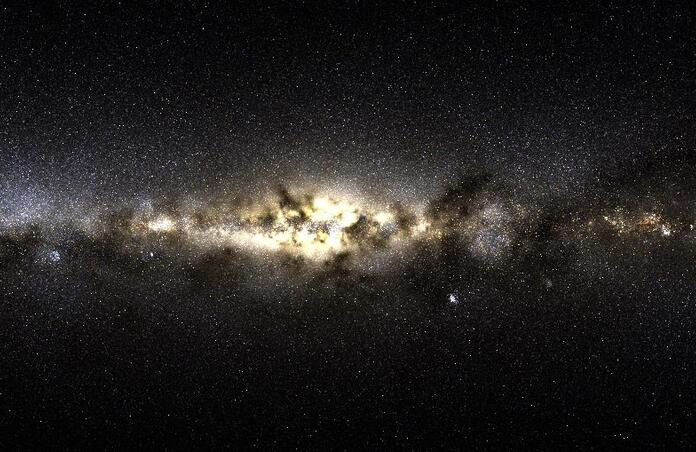Astronomers Discover Rare Stellar Stream in the Milky Way

A team of astronomers has discovered a hidden stellar stream of stars orbiting peacefully along the galactic disk—providing evidence that a massive dwarf galaxy may have collided with the Milky Way over one billion years ago.
Stellar streams are groups of stars orbiting a galaxy that were once a part of a dwarf galaxy or globular cluster that was destroyed by tidal forces, and astronomers have already found quite a few in the Milky Way. However, most stellar streams don’t exactly follow smooth orbiting patterns, nor do they have compositions similar to nearby stars. While these characteristics make them easy to spot, they also made astronomers overlook the possibility that there may be streams that share commonalities with stars in the solar system. Using data collected by ESA’s Gaia satellite, astronomers have just found evidence of a large stellar stream, containing stars with familiar compositions, moving alongside the galaxy’s rotation—and the stars aren’t native to the Milky Way.
Collision with a Dwarf Galaxy
Lead by theoretical physicist Lina Necib of Caltech, the team of astronomers approached Gaia's data seeking answers to some different questions about stellar streams. What group of stars in the Milky Way are moving with the galaxy's rotation (prograde) and are chemically similar to those born here, but don’t actually belong here? They found a never-before studied stellar stream of 232 stars that fit their search parameters, which they named Nyx.

After finding Nyx, the team created multiple simulations of the stellar stream’s orbital patterns as they were one billion years ago to determine exactly how they ended up in the Milky Way. Once they finished simulating all possibilities, they concluded that Nyx was most likely the result of an ancient merger with a dwarf galaxy. A repeat of their study revealed another group of stars nearly identical to the original stream, only this group had a different radial velocity (the opposite). The second group of stars further confirmed the dwarf galaxy hypothesis, as it likely made another pass (or many) through the galaxy before finally being consumed.
Stellar Streams & Dark Matter
Published in Nature, the researcher's findings provide insight into the nature of stellar streams and our galaxy's turbulent past. Now that we know Nyx is out there, further studies may reveal more specifics about the event that caused its formation, such as the size of the dwarf galaxy or how it collided in such a way that the stars maintained a prograde orbit. The research may also help astronomers determine if mergers help pad a galaxy’s dark matter disk, which, according to the researchers, “would substantially alter our current understanding of the local dark matter phase-space distribution, and have important ramifications for terrestrial searches for the dark matter particle.”